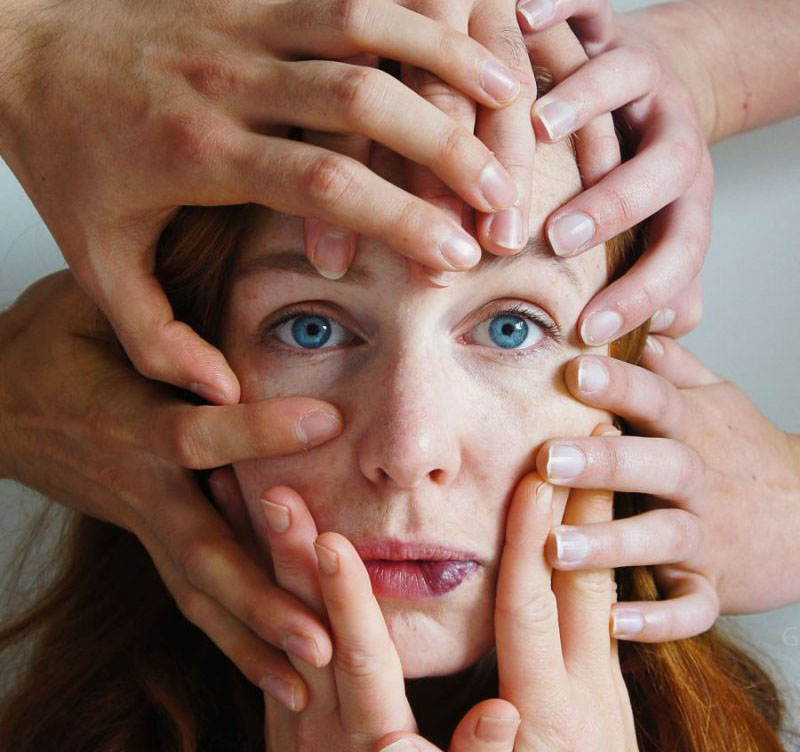
To some people appearance is of vital importance. They will spend endless amounts of time and money on clothes, cosmetics, styling and perhaps even plastic surgery to get the right look. For many it’s a matter of just fitting in, wearing the right outfits or having a style that doesn’t make you stand out. For others though, a scar or birthmark on the face can dictate how they feel and how they are perceived in public before they have even thought about what clothes or make-up to wear. Most of us are concerned at some level with our outward manifestation because in a modern western society it can define how we are judged and accepted by our friends, at school and in the workplace.
Performance collective O&O have made a new piece of physical theatre that ‘explores the relationship between identity and appearance’. It is largely concerned with the story of one girl who grows up with a birthmark on her face. It explores her experiences at school, her relationship with her parents and her attempts to enter the acting profession. It starts with the six performers already on stage as the audience enters. They are chanting, chatting, humming and miming; the everyday hubbub of life around us. Creating the sense of ordinariness in the places and spaces we inhabit as we move through our lives; organised and at the same time discordant. ‘…suddenly you see that all eyes are on you…’
The way I look attempts to gather the thoughts and feelings of those with a scar or facial disfigurement who can’t glide through the anonymity of life. The project was started a year ago and is based on testimonials from people with facial blemishes and deformities. The script was worked on first by the two artistic directors of the production team, Marina O’Shea and Tessa Gaukroger, and then later adapted and developed with the cast after they were recruited. Director Igne Barkauskaite refined the play in its later stages over a five-day period. This approach has resulted in a well-developed piece of physical theatre. The actors move around the stage and interact with each other easily and comfortably using only stools and picture frames as props. They swap roles and carefully integrate dialogue, mime and staging into the narrative. Each player brings a different personality to the stage.
There are sections on the treatment of birthmarks, it’s side effects and the possibility of surgery. Teenage teasing and parental over-protectiveness are explored before the show focuses more fully on the connections between appearance and identity. The principal narrative follows the main character, who has the birthmark, through her life and experiences of growing up. This becomes slightly repetitive at times (perhaps that’s the point) and I’d hoped for more on the wide-ranging cultural causes and consequences of our looks and appearance in general. Never the less it’s a thought provoking and engaging show. ★★★☆☆ Adrian Mantle 12th October 2017

